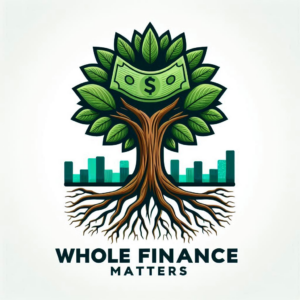Sustainable Investing: Balancing Profits and Environmental Impact
Definition and Principles
Sustainable investing refers to the practice of making investment decisions that consider both financial returns and positive environmental or social impacts. This approach integrates environmental, social, and governance (ESG) factors into the investment process. Investors aim to achieve a balance between profitability and sustainability. It is essential to recognize that this strategy can lead to long-term financial benefits. Many investors are increasingly aware of their choices.
The principles of sustainable investing include responsible resource management and ethical corporate behavior. Investors often seek companies that prioritize sustainability in their operations. This focus can enhance brand loyalty and reduce risks. Companies that embrace sustainability may outperform their peers. It is a growing trend in the financial world. Sustainable investing is not just a passing fad.
Historical Context and Evolution
Sustainable investing has evolved significantly over the past few decades. Initially, it emerged as a response to social and environmental concerns. Investors began to recognize the impact of their choices. This awareness led to the development of socially responsible investing (SRI) in the 1960s. Many sought to align their investments with personal values. The movement gained momentum in the 1980s and 1990s, as more investors demanded transparency.
In the 21st century, sustainable investing has become mainstream. Institutional investors now prioritize ESG factors in their strategies. This shift reflects a broader understanding of risk and opportunity. Companies with strong sustainability practices often demonstrate resilience. It is a ceucial consideration for long-term growth. The landscape continues to change rapidly.
The Importance of Environmental Impact
Climate Change and Financial Risks
Climate change poses significant financial risks to investors and companies alike. Extreme weather events can disrupt supply chains and increase operational costs. This unpredictability can lead to reduced profitability. Many investors are now assessing climate-related risks in their portfolios. They recognize that companies failing to adapt may face long-term challenges. It is a critical factor in investment decisions.
Additionally, regulatory changes aimed at mitigating climate change can impact market dynamics. Companies may incur costs to comply with new regulations. This can affect their financial performance. Investors must stay informed about these developments. Understanding the implications of climate change is essential. It is a vital aspect of risk management.
Social Responsibility and Investor Demand
Social responsibility has become a crucial factor in investment decisions. Investors increasingly demand that companies demonstrate ethical practices and sustainability. This shift reflects a growing awareness of the impact of corporate behavior on society. Many investors believe that socially responsible companies are more likely to achieve long-term success. It is a logical perspective.
Furthermore, the rise of impact investing highlights this trend. Investors seek to generate positive social and environmental outcomes alongside financial returns. This dual focus can enhance brand reputation and customer loyalty. Companies that prioritize social responsibility often attract more capital. It is a significant advantage in a competitive market. Understanding these dynamics is essential for informed investment strategies.
Strategies for Sustainable Investing
ESG Criteria and Their Application
ESG criteria encompass environmental, social, and governance factors that investors use to evaluate potential investments. These criteria help assess a company’s sustainability and ethical impact. Investors increasingly apply these metrics to identify risks and opportunities. This approach can lead to more informed decision-making. It is a strategic advantage.
For instance, environmental criteria may include a company’s carbon footprint and resource management. Social criteria often focus on labor practices and community engagement. Governance factors assess board diversity and executive compensation. Companies excelling in these areas tend to perform better over time. This correlation is significant. Investors who prioritize ESG criteria may enhance their portfolio resilience. It is a prudent strategy in today’s market.
Impact Investing vs. Traditional Investing
Impact investing focuses on generating measurable social and environmental benefits alongside financial returns. This approach contrasts with traditional investing, which primarily emphasizes profit maximization. Investors in impact investing seek to support initiatives that address pressing global challenges. This can include renewable energy, affordable housing, and healthcare access. It is a purposeful choice.
In traditional investing, the primary goal is often financial performance without explicit regard for social outcomes. While this can yield significant returns, it may overlook broader societal impacts. Impact investors typically use specific metrics to evaluate success. They assess both financial performance and social impact. This dual focus can lead to sustainable growth. It is a compelling strategy for conscientious investors.
Challenges in Sustainable Investing
Greenwashing and Misleading Claims
Greenwashing refers to the practice of companies misleading consumers about their environmental efforts. This tactic can undermine genuine sustainable investing. Investors may find it challenging to distinguish between authentic initiatives and superficial claims. Many companies use vague language to promote their products as eco-friendly. This can create confusion in the marketplace. It is a significant concern.
Moreover, misleading claims can erode trust among investors. When companies fail to deliver on their promises, it can lead to reputational damage. Investors must conduct thorough due diligence to identify credible sustainability efforts. This includes analyzing third-party certifications and performance metrics. Transparency is essential for informed decision-making. It is a critical aspect of responsible investing.
Measuring Impact and Performance
Measuring impact and performance in sustainable investing presents significant challenges. Investors often struggle to quantify social and environmental outcomes effectively. This difficulty arises from the lack of standardized metrics across industries. Different companies may report their impacts in various ways. It can lead to inconsistencies and confusion. Clear metrics are essential.
Additionally, the time frame for measuring impact can vary. Short-term results may not reflect long-term benefits. Investors need to consider both immediate and future outcomes. This complexity complicates decision-making processes. Investors must remain vigilant and informed. Understanding these challenges is crucial for effective investment strategies. It is a necessary step for responsible investing.
Integrating Sustainable Investing into Retirement Planning
Building a Sustainable Retirement Portfolio
Building a sustainable retirement portfolio requires careful selection of investments that align with environmental and social values. Investors should consider funds that prioritize ESG criteria. This approach can enhance long-term financial performance while supporting sustainable practices. It is a strategic choice.
Moreover, diversification is essential in a sustainable portfolio. Investors should include a mix of asset classes, such as stocks, bonds, and real estate. This can mitigate risks associated with market volatility. Regularly reviewing and rebalancing the portfolio is also important. It ensures alignment with evolving sustainability goals. Investors must stay informed about market trends. This knowledge is crucial for effective retirement planning.
Long-term Benefits and Considerations
Integrating sustainable investing into retirement planning offers several long-term benefits. First, it can enhance portfolio resilience against market fluctuations. Companies with strong sustainability practices often demonstrate better risk management. This can lead to more stable returns over time. It is a logical strategy.
Additionally, sustainable investments may attract increasing capital as consumer preferences shift. Investors are more likely to support companies that prioritize ethical practices. This trend can drive growth in sustainable sectors. Regularly assessing the impact of investments is also crucial. It ensures alignment with personal values and financial goals. Investors should remain proactive in their approach. Staying informed is essential for success.

